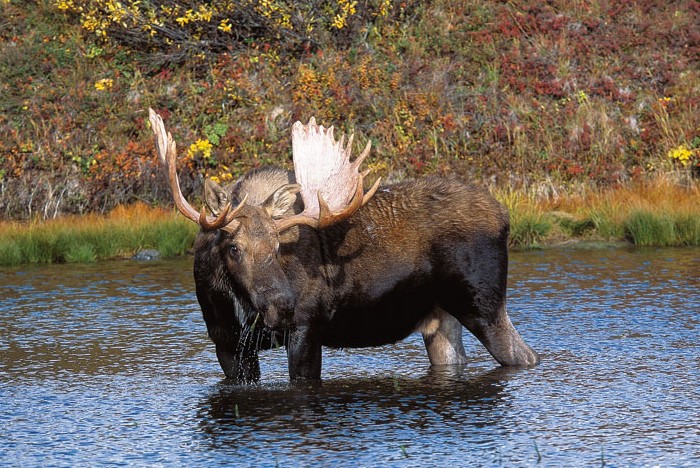Our guide on hunting moose by canoe in Northern Ontario
Advertisement
As the largest member of the deer family, moose can weigh well over 1,000 pounds. Right away, that makes for a challenge. In short, there’s no getting around the fact that a moose usually needs to be reduced into pieces if you’re going to transport it—especially when your mode of transportation is a canoe. I’ve hunted for moose several times by canoe, and while most of those hunts were extremely enjoyable, they were not without challenges and hardships.
Canoes, by design, are meant to move quickly and easily through the water. The trade-off is that they can tip over at the drop of a hat—especially when weighed down with quartered moose and a week’s worth of gear. And with all that extra weight, canoes also tend to get hung up on every sandbar and riffle. Bottom line: plan on being wet for most of the trip, either from pulling your canoe through the shallows or from capsizing.
Advertisement
For a true wilderness hunt, you’ll want to fly your canoe and gear into a remote northern Ontario river or lake. There are several charter services that will be pleased to arrange this type of adventure for you. The best time to go is mid-September, as the rut will just be winding up and the weather will be tolerable. Unfortunately, the bugs can still be brutal at this time of year. No matter what you do, squadrons of mosquitoes, no-see-ums and horseflies will undoubtedly find their way under your clothes and leave you covered in itchy welts. Though bug spray and mesh suits can help—especially at night in your tent—the incessant buzzing is enough to drive you crazy.
Back to getting wet. Since you’ll be travelling by canoe, all of your hunting will be along the water’s edge. That means you can pretty much count on your moose dying in, or partly in, the water. While these giants are awkward enough to manhandle on dry ground, they become nearly impossible in the water. And that means the chances of you staying dry while gutting and quartering your moose are pretty slim.
Special challenge
Advertisement
Ravenous insects—Mosquitoes, no-see-ums and horseflies—will undoubtedly find their way under your clothes and leave you covered in itchy welts
Essentials
The best advice I can offer for this hunt is to store as much of your gear as possible in dry bags and tightly lash everything to the canoe while paddling. A set of lightweight waders are invaluable for pulling your canoe through the shallow spots and for working on a moose once it goes down, whether in the water or on the ground. As for gear, try to keep your payload to a minimum for the trip back out; even a well-trimmed moose cut into manageable pieces can weigh 600 pounds. Essentials include plenty of insect repellent, a bug suit and a tent that will keep the tiny no-see-ums at bay. And bring a rifle that you won’t cry over if it suffers a few nicks and scratches, not to mention a possible dunking—a canoe hunt isn’t the place for your best gun. You’ll also need a first-class personal flotation device, and a hand winch for moving a downed moose or freeing a stuck canoe.
Learn more

